Gogol, Nikolai
Gogol, Nikolai [Гоголь, Николай; Gogol', Nikolaj; Ukrainian: Гоголь, Микола; Hohol', Mykola], b 1 April 1809 in Velyki Sorochyntsi, Myrhorod county, Poltava gubernia, d 4 March 1852 in Moscow. The most famous Russian writer of Ukrainian origin; son of Vasyl Hohol-Yanovsky. Having graduated from the Nizhyn Lyceum, he left for Saint Petersburg in 1828 armed with a manuscript and hope for a successful literary career. His aspirations were abruptly arrested by extremely negative criticism of his sentimentally Romantic narrative poem Hans Kuechelgarten, which he published at his own expense in 1829 and copies of which he subsequently bought out and destroyed. He tried to survive economically by working as a bureaucrat, a teacher at an institute for daughters of the nobility, and very briefly as a lecturer of history at Saint Petersburg University. In 1836 he left Russia and, except for two brief eight-month intervals (1838–9, 1841–2), he lived abroad, mostly in Rome, until 1849, when he returned via Palestine to Russia.
While working as a minor civil servant, Gogol spent his free time composing short stories based on his observations and memories of life in Ukraine. The first two volumes of these stories, Vechera na khutore bliz Dikan'ki (Evenings on a Farm near Dykanka, 1831–2), brought him immediate fame. Hiding behind the authorial mask of Rudy Panko the beekeeper, Gogol managed to portray a world where fantasy and reality intermingle in the prism of the worldly-wise but unsophisticated narrator, and thus Ukraine becomes at once fanciful, humorous, nostalgic, and somewhat poignant in its quaintness.
In his second two-volume collection of Ukrainian stories, Mirgorod (Myrhorod, 1835), containing the first version of his famous historical novelette Taras Bul'ba, Gogol's nostalgic tone gives way to a more satiric view of his native land. In the same year he also published Arabeski (Arabesques, 1835), in which his stories dealing with the world of the Saint Petersburg civil servant first appeared. Simultaneously he turned to writing drama and published his great Revizor (The Inspector-General, 1835), which needed the approval of the emperor to be staged in 1836. This was followed by his second completed play, Zhenit'ba (The Marriage, 1835), and the famous satirical story Nos (The Nose, 1835). His other plays remained unfinished.
The staging of The Inspector-General did not produce the result Gogol intended. Shattered by the fact that his idea of the moral influence of true art (artistically formulated in the story ‘Portret’ [The Portrait] in Arabeski) did not have the desired effect, he left Russia. The years abroad were less productive. Gogol devoted himself to his epic work, Mertvye dushi (Dead Souls, 1842), but managed to finish successfully only the first of three intended parts. He also wrote his famous story Shinel’ (The Overcoat, 1841), and revised Taras Bul’ba and ‘Portret.’ In 1845 he wrote his didactic essays, Vybrannye mesta iz perepiski s druziami (Selected Passages from Correspondence with Friends, 1847). Disillusioned by the attacks that followed this publication, Gogol blamed himself for being incapable of producing morally ennobling art. His attempt at preparing himself morally for his task of ‘serving God and humanity’ sent him first on a pilgrimage to Jerusalem; finally, under the influence of a religious fanatic, Rev M. Konstantinovsky, who demanded that he enter a monastery and destroy his ‘evil’ art, Gogol burned the second part of Dead Souls, refused all food, and stayed in bed until his death.
His works have been published by Panteleimon Kulish (6 vols, 1857), N. Tikhonravov, and V. Shenrok (7 vols, 1889–96). The fullest edition is that published by the USSR Academy of Sciences (14 vols, 1940–52). His letters were published by Kulish, Shenrok (in 4 vols, 1901), and V. Gippius. Gogol’s collection of about 1,000 Ukrainian folk songs was used by Mykhailo Maksymovych and published by G. Georgievsky in 1908. His collection of materials for a Ukrainian dictionary is included in the collected works prepared by Gippius. There are numerous Ukrainian translations of Gogol’s individual works and two editions of selected works, of which the most recent appeared in 1952 (3 vols).
Gogol's works display different variations of the Romantic style and a masterly use of metaphor, hyperbole, and ironic grotesque. His language is exceptionally rhythmic and euphonic. He was the first writer of the so-called Ukrainian school in Russian literature to employ a host of lexical and syntactic Ukrainianisms, primarily to play with various stylistic levels from the vulgar to the pathetic. Some of his Ukrainian stories are the earliest examples of the Russian naturalist school, which combined Romantic ideology with a negative, ‘low’ depiction of everyday life. Gogol’s writings were frequently imitated by such Ukrainian writers as Hryhorii Kvitka-Osnovianenko, Panteleimon Kulish, and Oleksa Storozhenko, and by such writers of the Ukrainian school in Russian literature as Yevhen Hrebinka; Gogol’s influence was felt in the early writings of Ivan Turgenev, F. Dostoevsky, V. Sollogub, and by the Russian Symbolists F. Sologub, A. Remizov, and A. Bely.
There are hundreds of translations of Gogol's works, and he is recognized as one of the greatest writers of the 19th century. His ideological writings provoked a prolonged controversy. His Vybrannye mesta was criticized severely by the Russian Westernizers (eg, Vissarion Belinsky), who valued in the works of his naturalist period mainly the satire on Russian life. A popular schematic biography of Gogol spread the idea that he experienced a religious crisis abroad. It was only in the 20th century that serious studies of the formal qualities of Gogol were written (by I. Mandelshtam), and a more analytic approach to his world outlook was taken. D. Merezhkovsky studied Gogol as a religious thinker. Vasilii Zenkovsky detected in Gogol all the basic ideas for which Dostoevsky later gained fame, as well as the same Romantic psychology. V. Gippius, following Zenkovsky to some extent, described Gogol’s development as a conflict between his aesthetic and religious outlook. In the 1920s Russian Formalists (Yu. Tynianov, B. Eikhenbaum, V. Vinogradov) often used Gogol’s works as the material for formulating their theories. Some recent (eg, S. Karlinsky’s) studies have concentrated on the sexual conflicts inherent in Gogol’s personality and reflected in his works. Other scholars have emphasized the consistency of his outlook throughout his life.
Gogol's relation to Ukraine is a controversial issue. His indifference to the Ukrainian question was sharply condemned by the critics Serhii Yefremov and, even more severely, Yevhen Malaniuk in the 1920s. Pavlo Fylypovych and Volodymyr Doroshenko stressed the importance of Ukrainian elements in Gogol's writings and the contribution his Russian works made to the development of a Ukrainian national identity. The whole question of Gogol’s ambivalent attitude toward Ukraine received a very thorough analysis in George Stephen Nestor Luckyj’s Between Gogol' and Ševčenko (1971).
BIBLIOGRAPHY
Shenrok, V. Materialy dlia biografii Gogolia, 4 vols (Moscow 1892–98)
Mandel’shtam, I. O kharaktere gogolevskogo stilia (Helsinki 1902)
Ovsianiko-Kulikovskii, D. ‘N.V. Gogol’,’ in Sobranie sochinenii, 1 (Saint Petersburg 1910)
Slonimskii, A. Tekhnika komicheskogo u Gogolia (Petrograd 1923)
Gippius, V. Gogol’ (Leningrad 1924)
—Gogol’ i natural’naia shkola (Leningrad 1925)
Vinogradov, V. Etiudy o stile Gogolia (Leningrad 1926)
Belyi, A. Masterstvo Gogolia (Moscow–Leningrad 1934)
Literaturnoe nasledstvo, 58 (Moscow 1952)
Remizov, A. Ogon’ veshchii (Paris 1954)
Fylypovych, P. Hohol’ ta Ukraïna (Winnipeg 1954)
Ravliuk, M. (ed). Hohol’ i ukraïns’ka literatura XIX st. (Kyiv 1954)
Krutikova, N. Hohol’ ta ukraïns’ka literatura (30–80 rr. XIX storichchia) (Kyiv 1957)
Nabokov, V. Nikolai Gogol (New York 1959)
Luckyj, G. Between Gogol’ and Ševčenko: Polarity in the Literary Ukraine, 1798–1847 (Munich 1971)
Maguire, R. (ed). Gogol in the Twentieth Century: Eleven Essays (Princeton 1974)
Karlinsky, S. The Sexual Labyrinth of Nikolai Gogol (Cambridge, Mass and London 1976)
Fanger, D. The Creation of Nikolai Gogol (Cambridge, Mass and London 1979)
Peace, R. The Enigma of Gogol: An Examination of the Writings of N.V. Gogol and Their Place in the Russian Literary Tradition (Cambridge 1981)
Ukraïns’ki narodni pisni v zapysakh Mykoly Hoholia (Kyiv 1985)
Mann, Iu. Nikolai Gogol’: Zhizn’ i tvorchestvo (Moscow 1988)
Popovych, M. Mykola Hohol’: Roman-ese (Kyiv 1989)
Stilman, L. Gogol (Tenafly, New Jersey–New York 1990)
Fusso, S.; Meyer, P. (eds). Essays on Gogol: Logos and the Russian Word (Evanston, Illinois 1992)
Larsson, A. Gogol' und das Problemder menschlichen Identität (Munich 1992)
Raicu, L. Avec Gogol: essai sur l'inconsistance (Lausanne 1992)
Fusso, S. Designing Dead Souls: An Anatomy of Disorder in Gogol (Stanford, California 1993)
Shapiro, G. Nikola Gogol and the Baroque Cultural Heritage (University Park, Pennsylvania 1993)
Krziwon, A. Das Komische in Gogols Erzählungen (Frankfurt am Main 1994)
Barabash, Iu. Pochva i sud’ba: Gogol’ i ukrainskaia literatura (Moscow 1995)
Jenness, R. Gogol's Aesthetics Compared to Major Elements of German Romanticism (New York 1995)
Luckyj, G. The Anguish of Mykola Hohol, a.k.a. Nikolai Gogol (Toronto 1998)
Barabash, Yu. “Koly zabudu Tebe, Ierusalyme...” Hohol’ i Shevchenko: Porivnial’no-typolohichni studii (Kharkiv 2001)
Aheieva, Vira (ed.) Sorochyns'kyi iarmarok na Nevs'komu prospekti: ukraïns'ka retseptsiia Hoholia (Kyiv 2003)
Kychenko, A. Molodoi Gogol’: Istoky puti evoliutsii rannei prozy (Cherkasy 2004)
Dmytro Chyzhevsky, Danylo Husar Struk
[This article originally appeared in the Encyclopedia of Ukraine, vol. 2 (1989).]
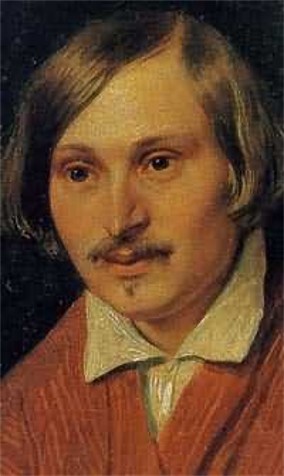
.jpg)
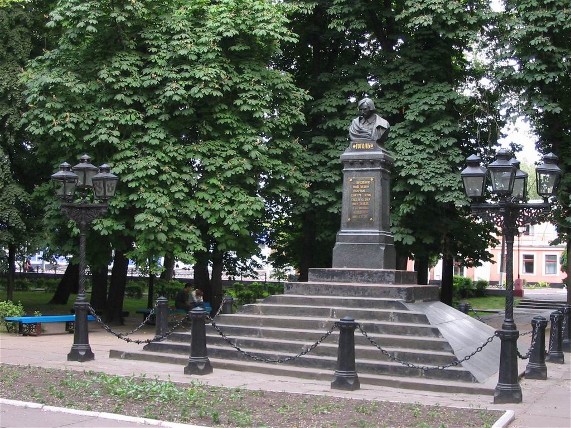
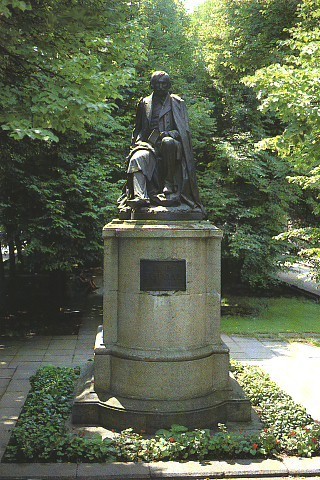
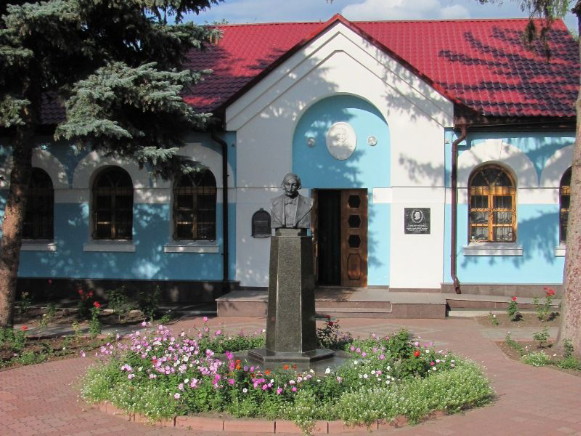
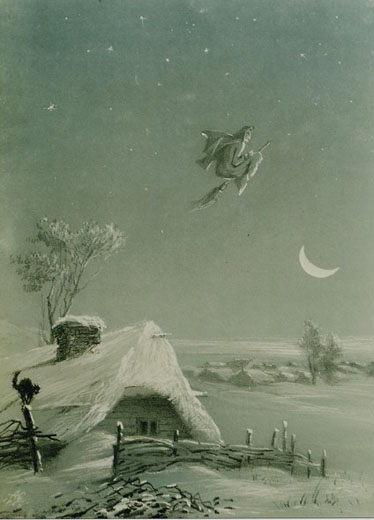
.jpg)